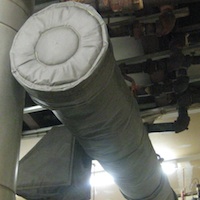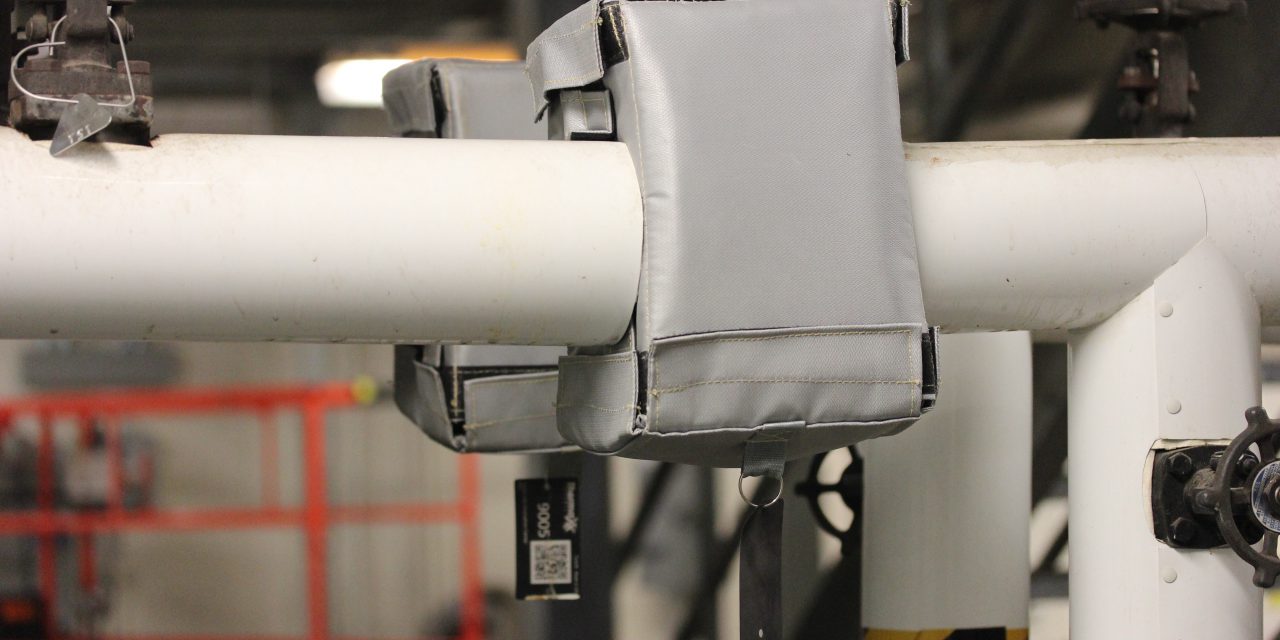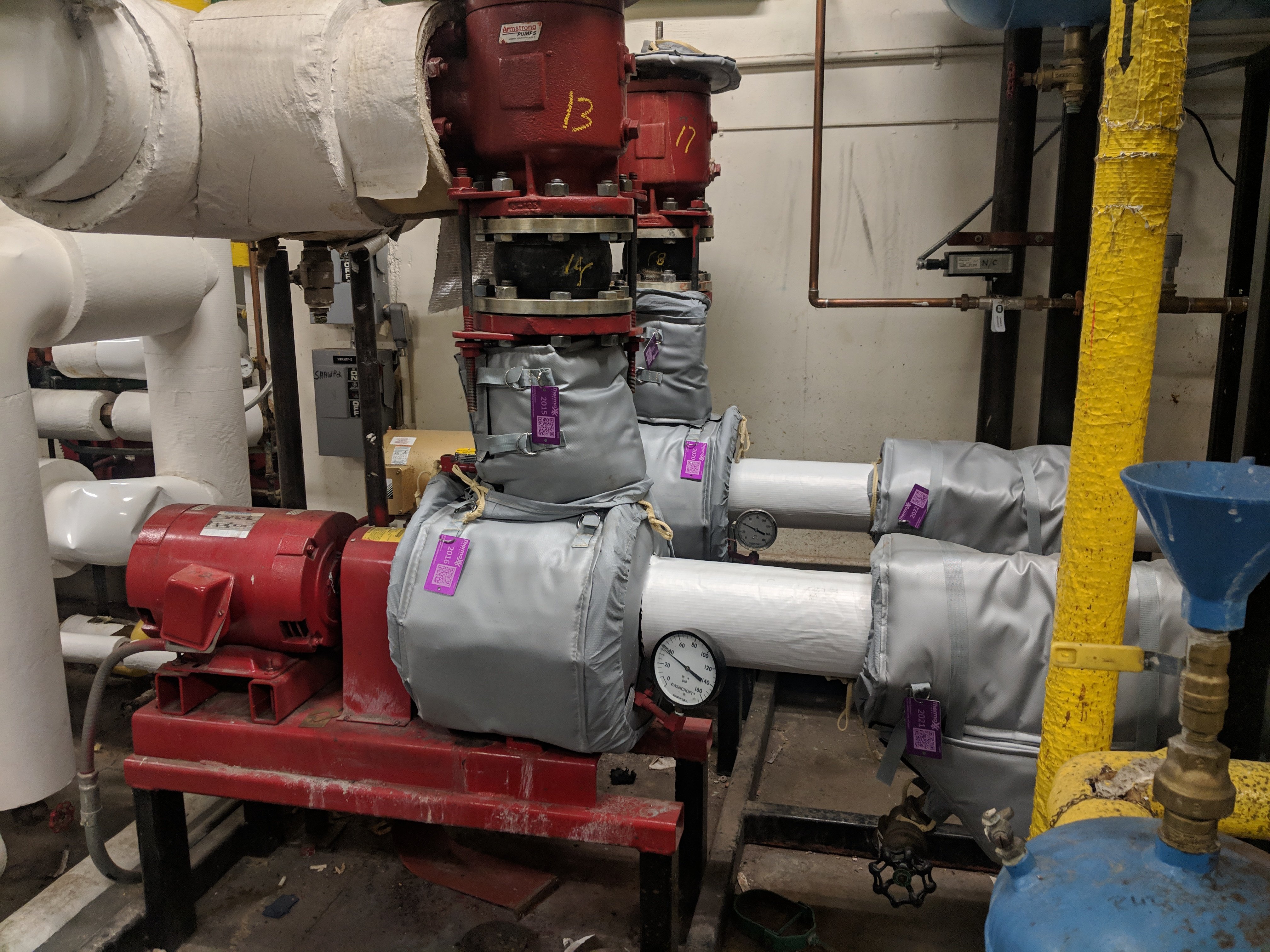The Best Way to Insulate Steam Pipes
The Best Way to Insulate Steam Pipes?
According to the U.S. Department of Energy, "insulating steam distribution lines can typically reduce energy losses by 90% and help ensure proper steam pressure at plant equipment.” While this statistic can easily convince you that insulating your steam lines must be a priority, it doesn't offer any advice on the best way to insulate your steam pipes. We’re the experts on insulating steam components and will address this question below.
Why Traditional Fiberglass Steam Pipe Insulation Isn't the Best Option
Traditionally, stay-in-place fiberglass insulation is used to insulate steam pipes, particularly for residential purposes but also for commercial use. The fiberglass insulation comes in varying thicknesses from ½” to 2”+ depending on the size of the pipe and its operating temperature.
 There are situations, however, when installing traditional stay-in-place fiberglass insulation is not ideal for insulating steam pipes. Here’s why. It is considered a best practice, and sometimes ordinance, to regularly inspect your steam pipes. A proper inspection requires access to the pipe’s surface, usually resulting in a “plug” being cut from the hard surface of the insulation. Inspections become more time consuming, difficult, and expensive for this reason.
There are situations, however, when installing traditional stay-in-place fiberglass insulation is not ideal for insulating steam pipes. Here’s why. It is considered a best practice, and sometimes ordinance, to regularly inspect your steam pipes. A proper inspection requires access to the pipe’s surface, usually resulting in a “plug” being cut from the hard surface of the insulation. Inspections become more time consuming, difficult, and expensive for this reason.
Often, the plugs are not replaced after the conclusion of the inspection. The integrity of the insulation is now compromised as heat escapes through the opening on the surface. Additionally, moisture can enter through the opening and get trapped in the insulation. This increases the risk for CUI (corrosion under insulation) to occur and cause process leakage.
The Best Way to Insulate Your Steam Pipes Today
 The insulation industry is rapidly innovating and enhancing product performance. Thermaxx Jackets has spent years developing a steam pipe insulation jacket that is ideal for commercial use and is free of all of the problems associated with traditional fiberglass insulation.
The insulation industry is rapidly innovating and enhancing product performance. Thermaxx Jackets has spent years developing a steam pipe insulation jacket that is ideal for commercial use and is free of all of the problems associated with traditional fiberglass insulation.
Thermaxx Jackets’ steam pipe insulation jackets are easily installed, removed, and replaced requiring no special skills. They come in a wide range of nominal pipe sizes (NPS) from 2” to 24”.
Presently most industry designs aim at a touch temperature (outer surface) of the insulation at 140°F or less. Thermaxx Jackets are designed to have a touch temperature of 120°F or less for two reasons. First, energy loss is reduced for maximum savings. Second, 140°F is still hot to touch, while 120°F is much more “skin” friendly.
Custom jackets are also available for larger pipes, sharp angles and bends, or other non-standard piping. Thermaxx Jackets ensure that moisture does not plague pipe surfaces and are very cost-effective. Their dependability is backed by a 5-year warranty. We, as the experts on steam component insulation, feel confident that effective and efficient Thermaxx Jackets are the best way to insulate steam pipes.
Read more about Thermaxx Jackets for steam pipes, or contact us for more information.

Thermaxx Jackets
Thermaxx Jackets was founded over 25 years ago with a single purpose: to help our clients save energy with removable insulation blankets when traditional stay-in-place insulation is not practical. Our dedication to this purpose has resulted in a long list of customers who have saved money thanks to Thermaxx Jackets! Combining expertise in heat loss, wireless monitoring, insulation design, and several other disciplines, we’ve become the #1 provider and fabricator of removable insulation jackets and covers. The Thermaxx Sales and Service teams are experienced and trained to provide clients with the most timely and cost-effective solution.
Categories
- removable insulation
- thermaxx jackets
- energy savings
- savings
- energy efficiency
- safety
- pipe insulation
- energy
- case study
- insulation materials
- thermal insulation
- heat loss survey
- heat loss
- energy loss
- hot insulation
- fiberglass
- installation
- steam
- New York
- custom insulation
- NYC Case Study
- boiler
- university
- Connecticut
- reusable insulation






